Baling Hay
A couple days after Harland mowed the hay in the field featured in my hay mowing post, he was back to bale it. He makes those large “elephant-sized” bales, and uses then to feed the cattle through the winter.
The baler, positioned over the row of hay left by the swather, is pulled around the field behind the tractor.
The hay is drawn up into the baler as it goes over it, is wound tightly together until the baler is full, netting is applied around the bale to hold it together, and then Harland pulls a rope on the baler which lifts the lid,
and discharges the bale out the back.
The lid comes back down,
and Harland is off again to make another bale. Each bale weighs about 1500 pounds, and we usually get about 4 bales per acre.
About every 50 bales, Harland applies baby powder to the netting on the back of the baler.
This keeps the netting from sticking to the rubber rollers it is fed through.
It’s late afternoon, and Harland leans against a bale while taking a break. Taking advantage of the dry weather, he bales until 9pm before stopping for the day, and eating supper, so he has a snack to keep him going.
Back to the baling. Here another one is done, and Harland releases the baler lid.
The bale drops out,
and the lid closes.
Here’s a close up of a bale.
An instrument inside the tractor cab indicates what is going on inside the baler, and lets Harland know via a flashing light and beeping sound when the bale is ready to be dropped out.
When all the baling is done, Harland will be back in the tractor with 2 bale spears, one attached to the back of the tractor, one on the front, each containing 3 long spikes. He’ll skewer the bales and carry them from the field to a central location, and arrange them in neat rows all touching. And there they will stay until needed for feeding to the cattle next winter.
Here’s what the field looked like when Harland finished baling here.
He left to finish the baling in other fields, and I lingered to take pics of the finished hay. I wish I could include in this post what the bales smell like. Think freshly mown grass, times ten. It’s a very clean smell. I think it should be captured in a candle. Just my opinion.
~~~~~~~~~~~

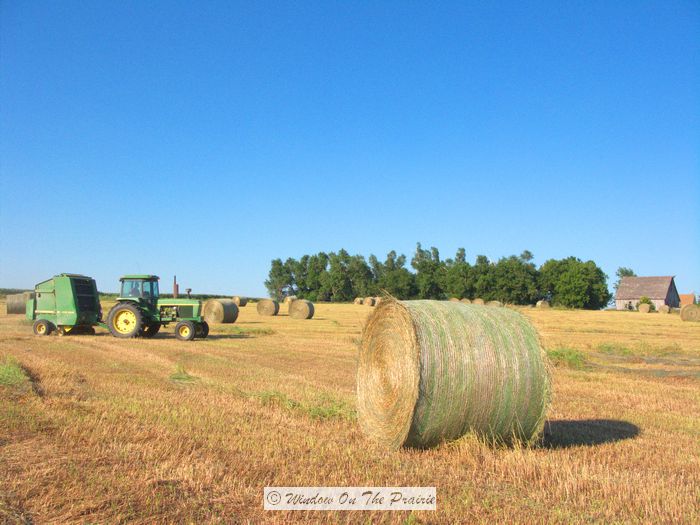
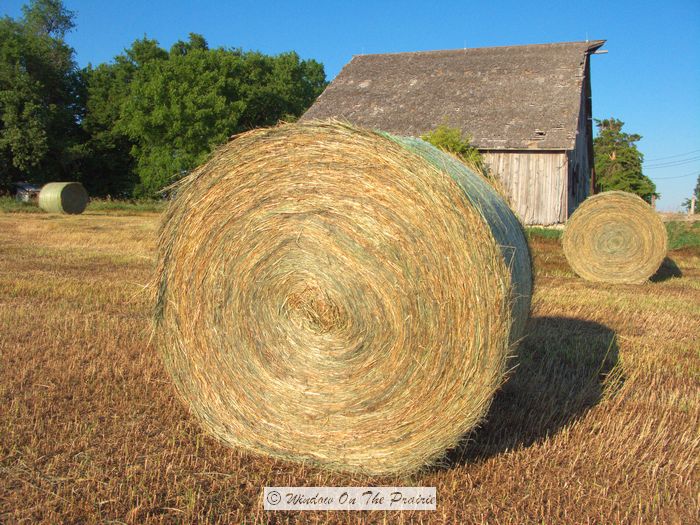
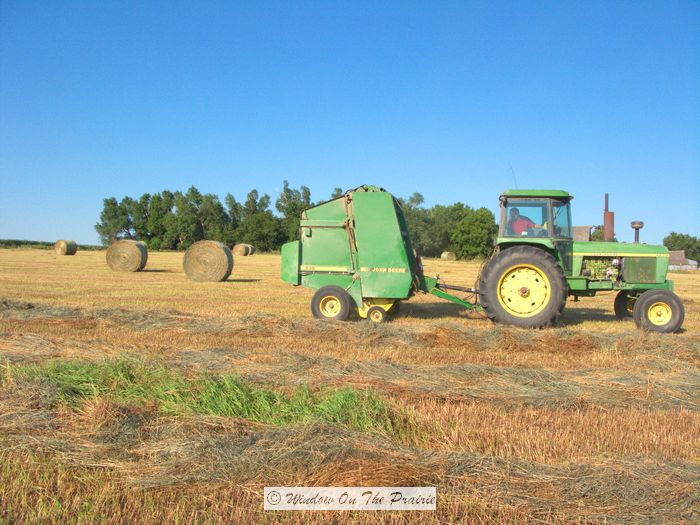
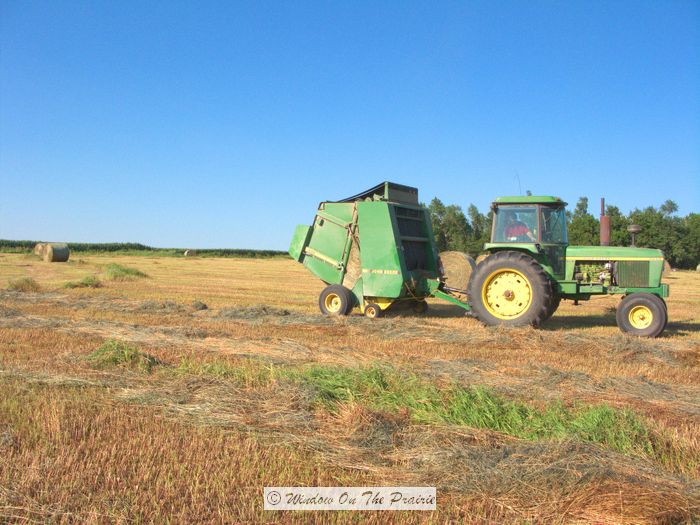
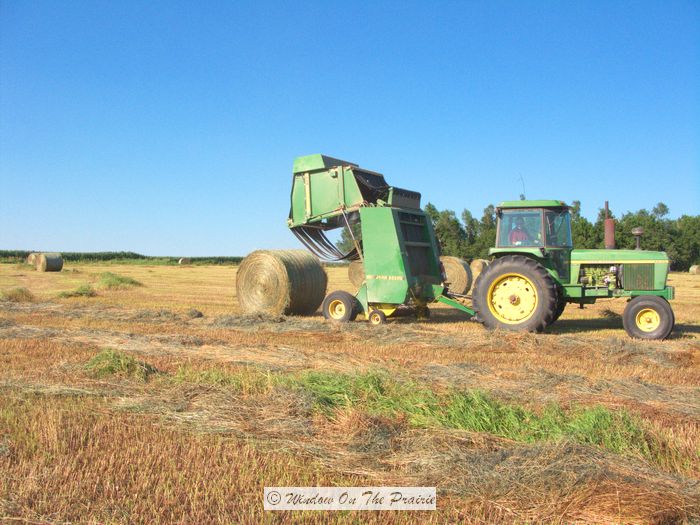
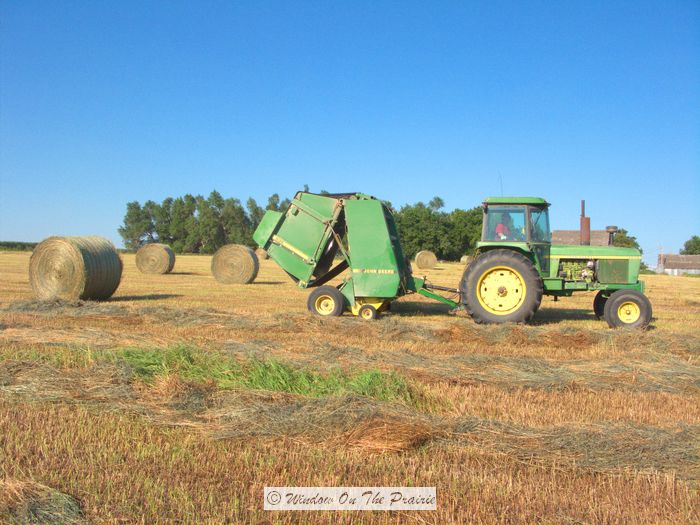
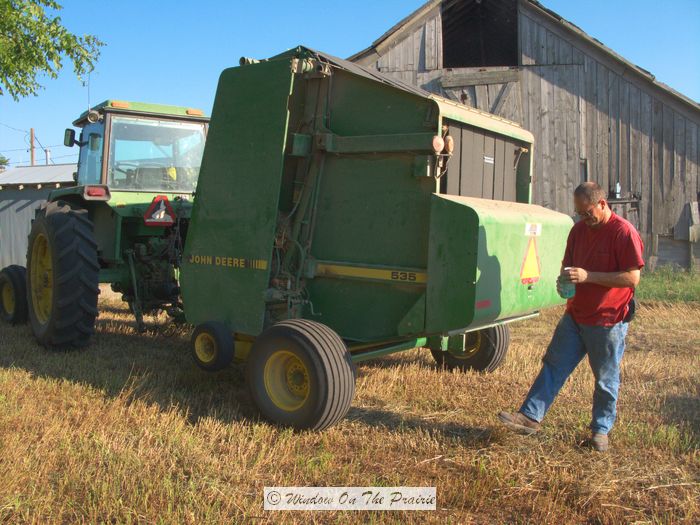

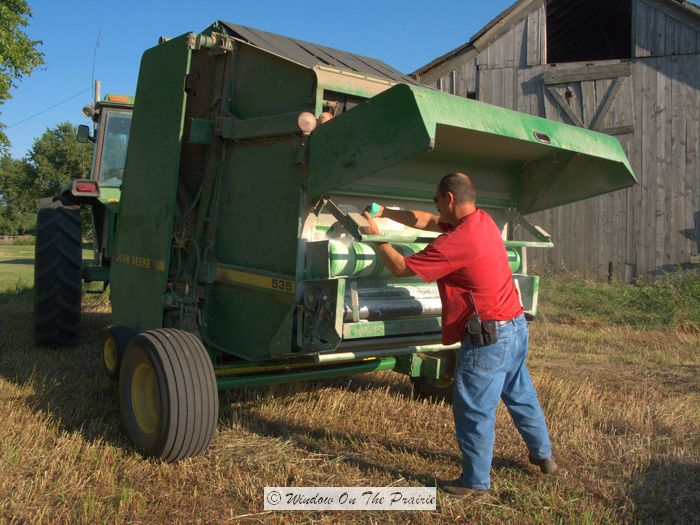
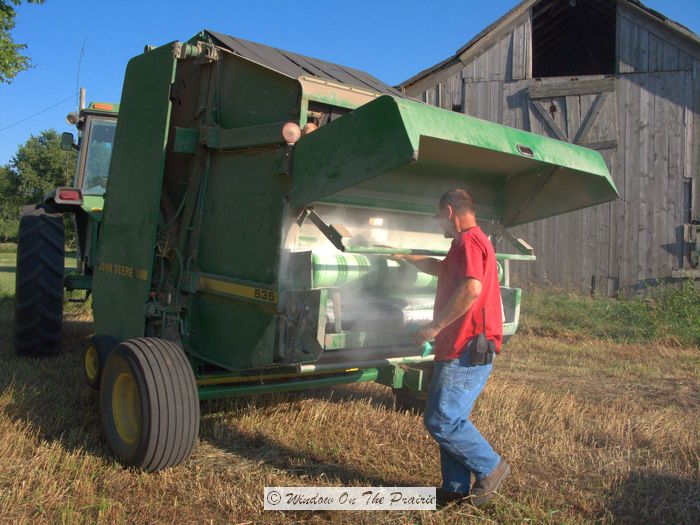
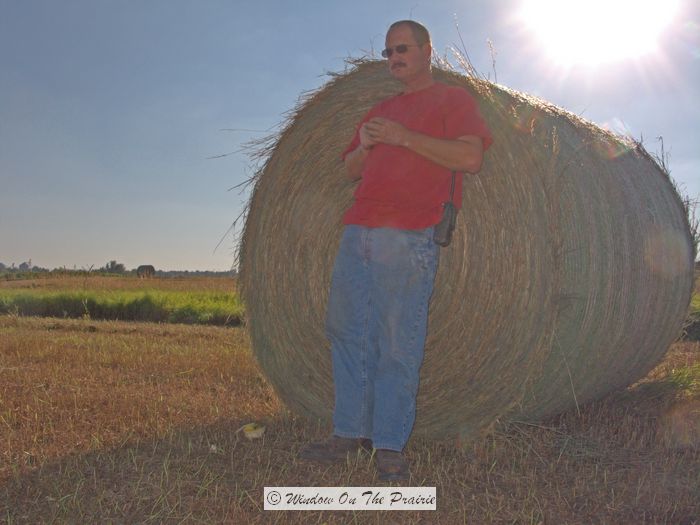
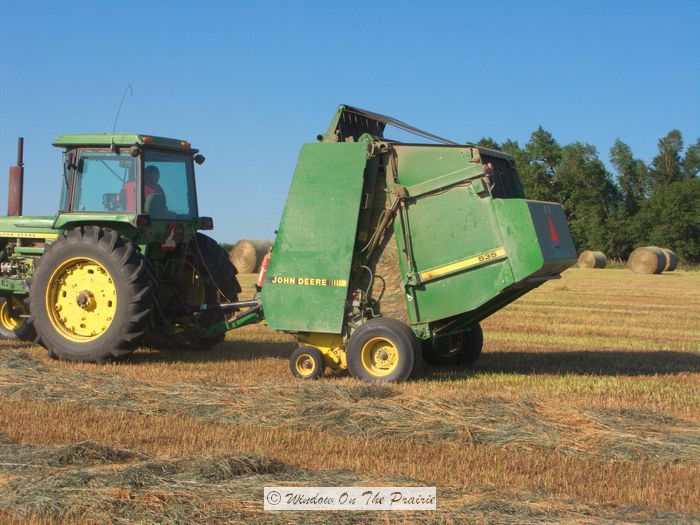
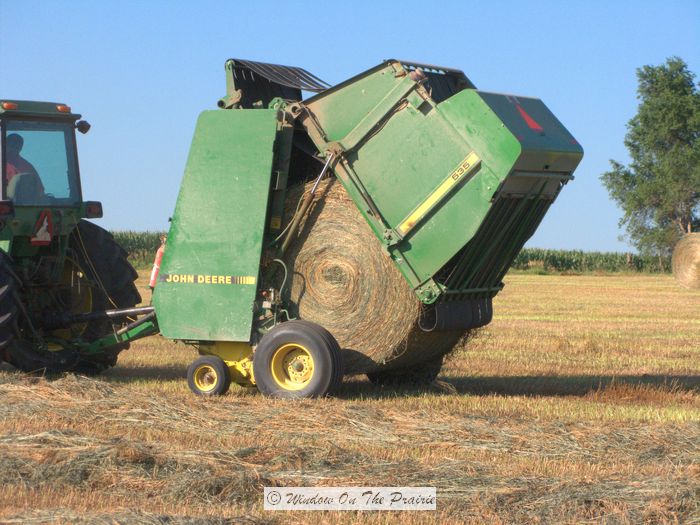

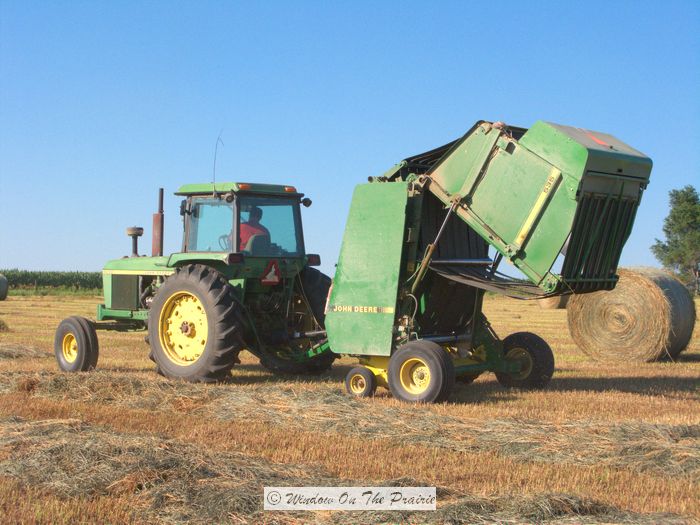
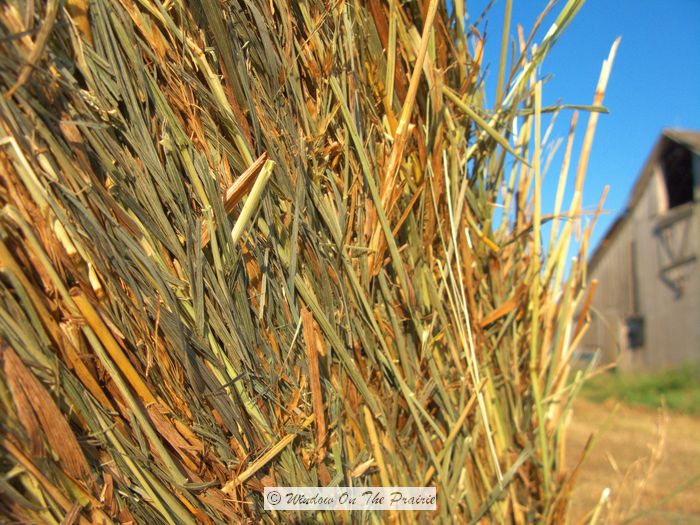
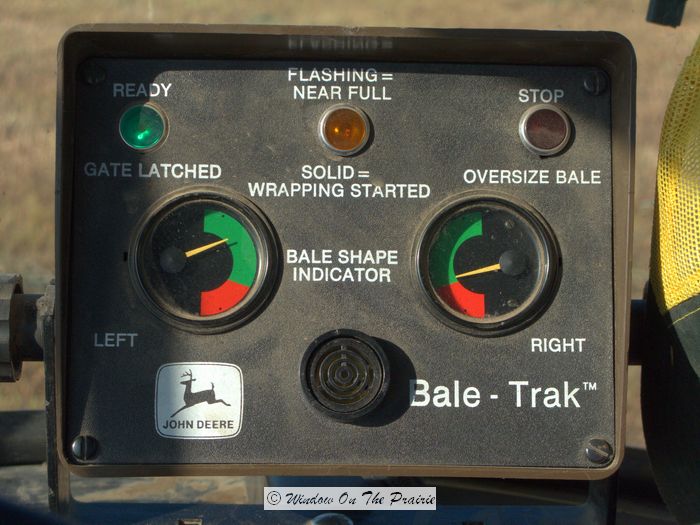
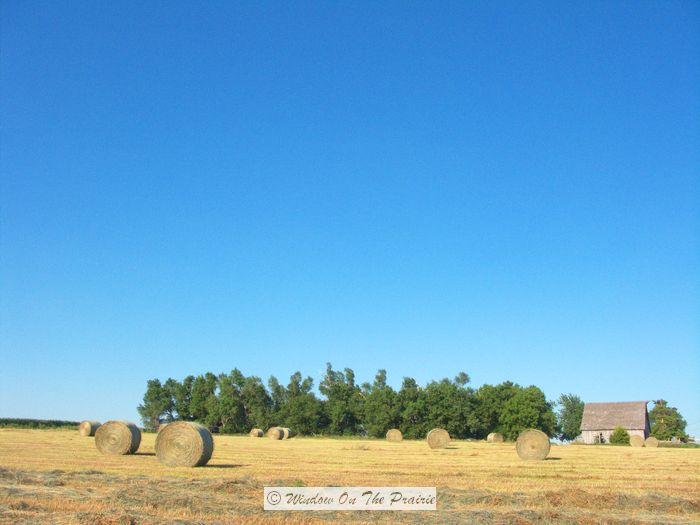
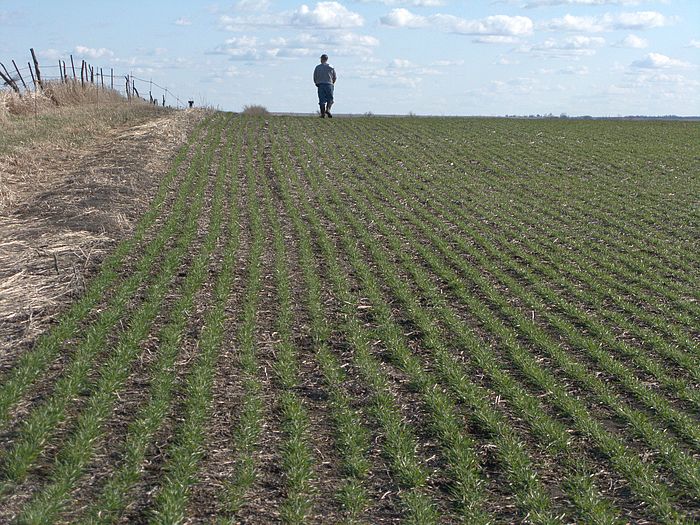
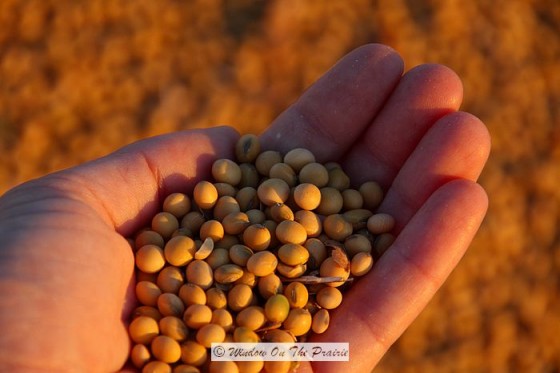
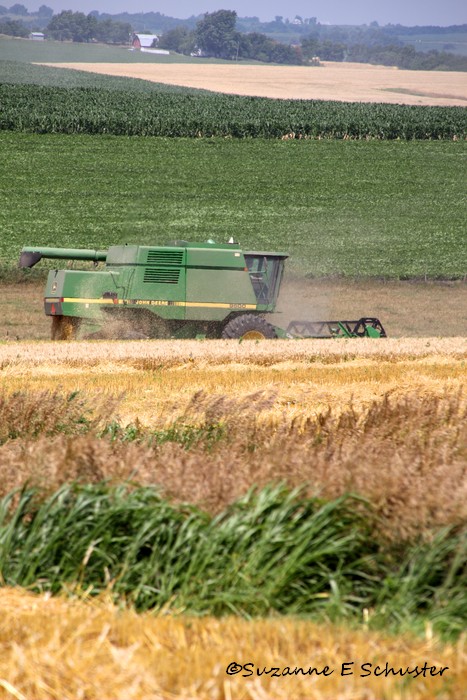
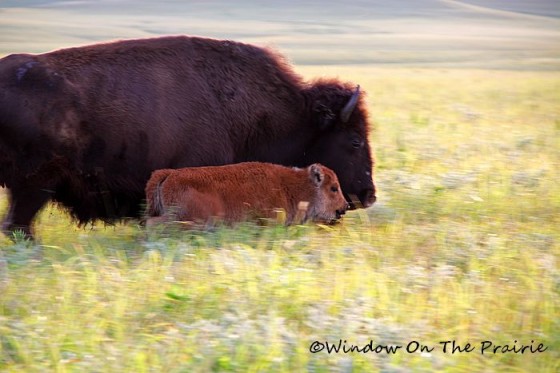
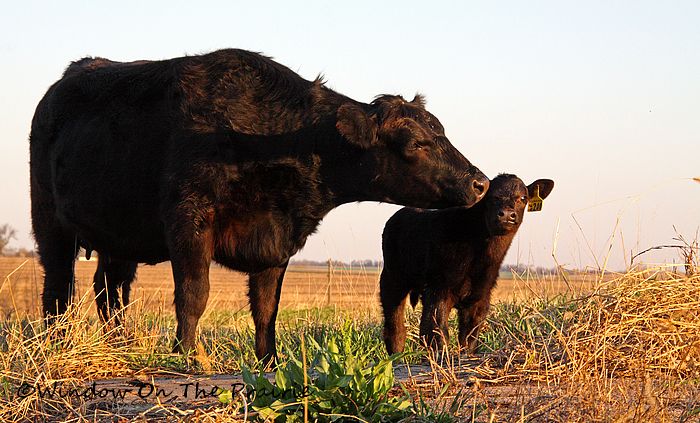

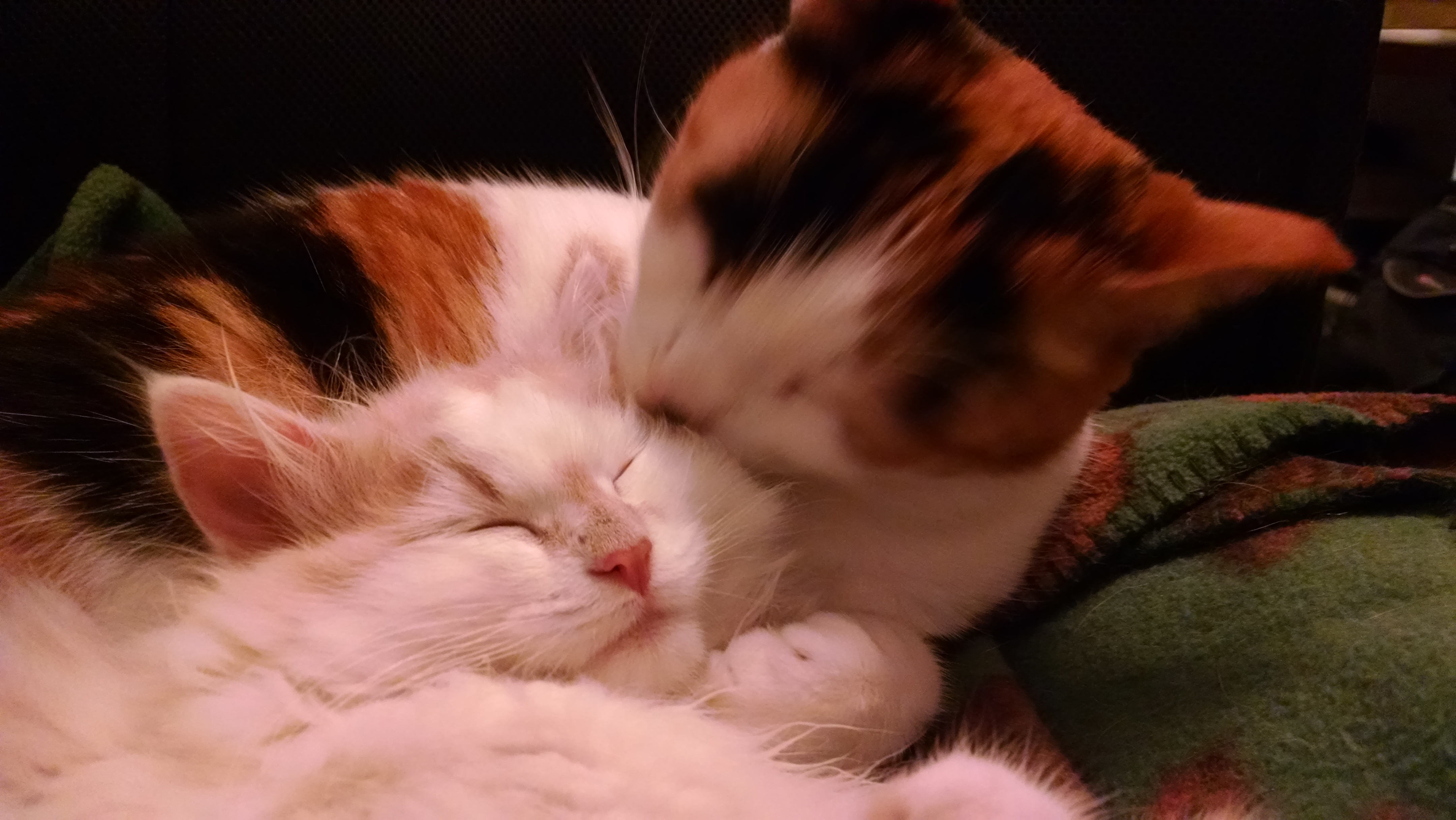
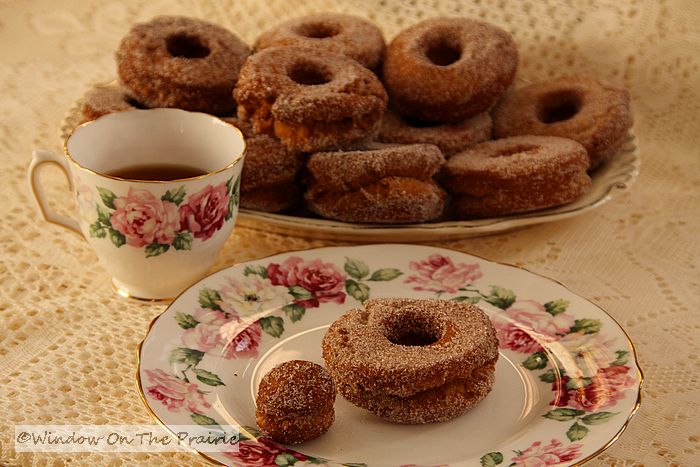
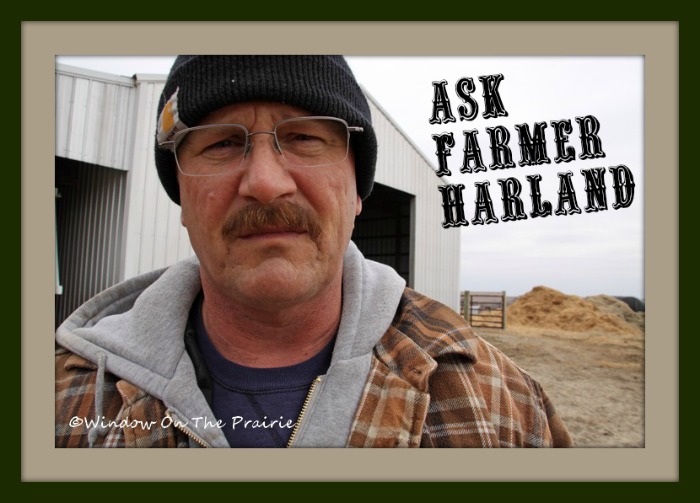
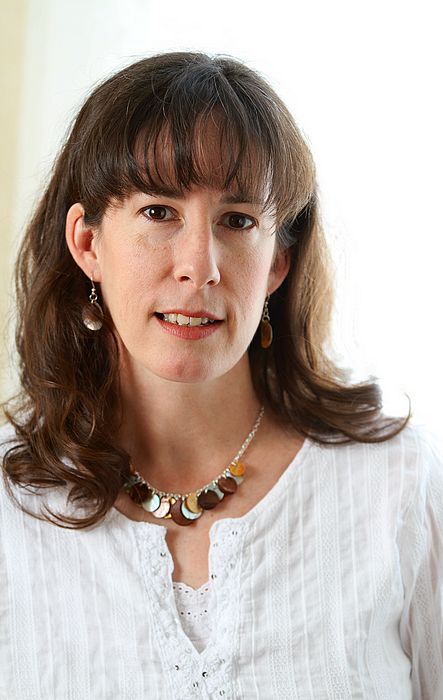


As some one born, bred and living forever in the city,I have been reading this series of posts on farming activities with great interest. If only I could’ve smelt the hay! I couldn’t help being amused thinking how Harland “delivers” so many bales of hay cozily wrapped in netting, and also applies baby powder solicitously to the netting 🙂
Hi Shailaja,
Tee Hee….I was thinking about the same thing. I told Harland I ought to follow him around the field announcing with each new bale, “it’s a girl!”, or “it’s a boy!”. He thinks I’m crazy. Ha ha.
Thanks for stopping by,
Suzanne
Oh that’s how it’s done! I love how they look, spread out in the fields like that! I hope you capture the spearing and moving of the bales, and I wish I could smell what you smell. It looks so nice and dry there. What happens when the bales get wet? Are they covered once they are lined up? Why does Harland do elephants and not rectangular bales? Is it easier to leave them out in the field rather than hauling them to a barn and stacking them? Do you ever climb up on those elephants, just for fun?
You didn’t decorate the baler for the 4th?!
Thanks for sharing! This is fascinating. I love your farm!
Hi Kelly,
I will get some pics of the spearing and moving of the bales, and do a post about it soon. We don’t cover our bales- the water runs off of them because they are round, keeping the inside of the bale dry. We do the large bales because doing small bales means you have to pick them up and move them by hand which is a lot more work. I used to play on large bales when I was a kid a lot- so much fun.
Take care, and thanks for visiting,
Suzanne
Wow! I driven past hay fields and wondered how the farmers got those big rolls. Now I know. Do you keep them inside so they don’t get wet? What a gorgeous blue sky. Your site is so much fun; I love checking every day to see what’s up. Thanks!
Hi Vivian,
We don’t keep our hay inside. They do get wet, but just the outside as the water runs off them because of their round shape. I’m glad you stopped by and enjoyed this post. I enjoy doing this blog for people like you.
Take care,
Suzanne
I am so glad I found your blog. My friend and I are entranced with the huge bales of hay and it even spurred us to go out exploring with our cameras yesterday. Now I know how they are made. I have a romanticized photo of one on my blog…lol. Thank you for sharing the process.
Hi Cindra,
I just got back from a visit to your blog. You take lovely photos! The one of the bales was perfect.
Thanks for visiting,
Suzanne
Hi Suzanne, I am so glad you did this post! I had no idea how the bales got to be in that round shape. I knew it was done by machinery…I at least knew that…but to see it up close like that is so cool. Also, I had no idea there was a netting over the bales. Very interesting. Also, I didn’t realize they weighed so much!!! Wow! I am really getting to learn a lot from your blog! cool!
Hi Bonnie,
Thank you! I’m learning a lot from you on your site too.
TAke care,
Suzanne
How cool is this?? I can remember visiting at my Grandparents farm (in the Flint Hills, I might add!)taking lunch out to Grandad and the boys in the field as they were “putting up hay”!!! It did smell fantastic but I can also remember the hot, hot sun and wishing we were back at the house already and headin’ for the creek! City kids we were!
Hi Jeanne,
Thanks for sharing your haymaking memory. I love the Flint Hills- such a beautiful part of the country, but so unknown to those outside KS.
Take care,
Suzanne
Great post on the bales. What fun it was as a kid to jump from one to another in a row of bales. Looks like he got a good crop.
Hi Gardener,
I did the jumping from one bale to another as a kid, or I just sat up there and enjoyed the view. A lot of memories.
TAke care,
Suzanne
Hey, you forgot the picture with those bales all lined up, and tons of happy kids running on the top of them!!! My kids love ’em!! One of my memories was watching my dad move them from the line in the spring and the rats and mice that had found a winter home there ran for the hills! YUCK!! Enjoyed!
Hi Melanie,
I remember the bales being moved and the mice running for cover too. The barn cats would take advantage of that too.
Thank you,
Suzanne
We just purchased a round baler (normally we bale 3×4 large squares) with a net wrapper. I will tell hubs about the baby powder use in case he ever needs to use it.
My hubs and boys are in WY putting up hay. They are enjoying it!!
Hi Kath,
Harland says the baby powder works great, and that they recommend that it is reapplied every 50 bales or so.
Happy baling!
What happens to the mice that live in the fields when the grass is cut for bailing? Do they get shredded? There is a fox that always comes out when the farmer is cutting the grass, searching through the rows of grass, assumingly for mice and other small, easy prey.
Hi KP,
I think most of the mice run for cover, but some I’ll admit don’t make it. I have seen vultures take advantage of this circumstance after a field is baled.
I grew up on the farm. We baled hay and had crops also. You take great pictures, etc. I think people probably look at your site and think man it would be fun to live on the farm, but they don’t probably realize how hard it used to be in the past. We didn’t have round balers when I grew up. They were rectangular bales and you had to lift them. Some of them weighed more than I did when I was younger (especially the alfafa bales). It used to be a lot of work and sometimes dangerous work. You had to be careful not to get caught up in the power take off shafts, etc. (You could get your arm shattered in heart beat). Even these round balers shown above can be dangerous. A kid that I knew had one jamb on him and he tried to kick the hay into the baler as hard as he could and he got drug into the baler and was killed. I believe farming used to be one of the most dangerous jobs about 10 to 20 years ago; but I don’t know if it is still is considered to be or not.
Loved looking at your wonderful pics and videos. Was just smiling to myself watching the video of the baling. I grew up in a rural area and used to help my aunt & uncle haul & stack their bought “pre-baled” hay. Unfortunately, I never was around the actual baling, but I know how freshly baled hay smells and you are right, it would be a good candle scent. Makes me homesick now just thinking about it.
Stacy,
That sounds like hard work, helping your aunt and uncle haul and stack the hay. But you’re right, it is the best smell ever. Like the earth, sky, and grass all rolled into one.
And I realize the work is very hard, but life just seems so much simpler on a farm than here in the city & suburbs. I didn’t know how good I had it in the country where I grew up, couldn’t wait to leave, and now I daily plot my escape from the rat-race of suburbia. How I long to be able to walk out on the porch early in the mornings and just smell the fresh country air and enjoy the satisfaction of living off the land and have a wide open space that me and my boys can roam free in.
I was the same way Stacy. I too grew up in the country, couldn’t wait to get away from it, and then couldn’t wait to get back to it. Hold on to your dream.